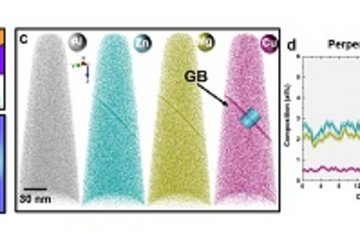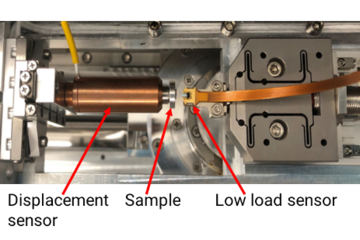All genres
21.
Journal Article
Instabilities at frictional interfaces: Creep patches, nucleation, and rupture fronts. Physical Review E 88 (6), 060403 (2013)
22.
Journal Article
Phase-field-crystal study of grain boundary premelting and shearing in bcc iron. Physical Review B 87 (2), 024110 (2013)
23.
Journal Article
Structural short-range forces between solid-melt interfaces. Physical Review B 87 (2), 024109 (2013)
24.
Journal Article
Phase field modeling of phase transitions stimulated by Joule heating. Journal of Crystal Growth 375, pp. 39 - 48 (2013)
25.
Journal Article
Driving forces for interface kinetics and phase field models. International Journal of Solids and Structures 50 (14-15), pp. 2424 - 2436 (2013)
26.
Journal Article
Solidification in syntectic and monotectic systems. Physical Review E 86 (2), pp. 021603-1 - 021603-7 (2012)
27.
Journal Article
Brittle fracture in viscoelastic materials as a pattern-formation process. Physical Review E 83, pp. 046213-1 - 046213-24 (2011)
28.
Journal Article
Brittle fracture in viscoelastic materials as a pattern-formation process. Physical Review E 83 (4/2), 046213 (2011)
29.
Journal Article
An analytical study of the static state of multi-junctions in a multi-phase field model. Physica D 240 (4-5), pp. 382 - 388 (2011)
30.
Journal Article
Phase field modeling of crack propagation. Philosophical Magazine 91 (1), pp. 75 - 95 (2011)
31.
32.
Conference Paper
Elastic and plastic effects on solid-state transformations: A phase field study. International Journal of Materials Research 101 (4), pp. 462 - 466 (2010)
33.
Talk
Ab initio based understanding of the segregation and diffusion mechanisms of hydrogen in steels. TMS Annual Meeting 2014, San Diego, CA, USA (2014)
34.
Talk
First-principles calculations of the key atomistic parameters related to hydrogen embrittlement in FeMn. DPG Frühjahrstagung 2013, Regensburg, Germany (2013)
35.
Talk
Liquid Metal Embrittlement: Linking Small Scale Wetting Phenomena and Mesoscale Pattern Formation Processes. MRS 2012, Boston, MA, USA (2012)
36.
Talk
Scale Bridging Modeling of Hydrogen Embrittlement. 2012 MRS Fall Meeting & Exhibit, Boston, MA, USA (2012)
37.
Talk
Scale bridging modeling of hydrogen embrittlement. ICAMS Klausurtagung, Münster, Germany (2012)
38.
Talk
Kinetics of Phase Transitions. Advanced Discussions, Bochum, Germany (2012)
39.
Talk
Scale bridging modeling of hydrogen embrittlement. DPG Frühjahrstagung 2012, Berlin, Germany (2012)
40.
Talk
Solidification along liquid-liquid interfaces in syntectic systems. DPG Frühjahrstagung 2012, Berlin, Germany (2012)











